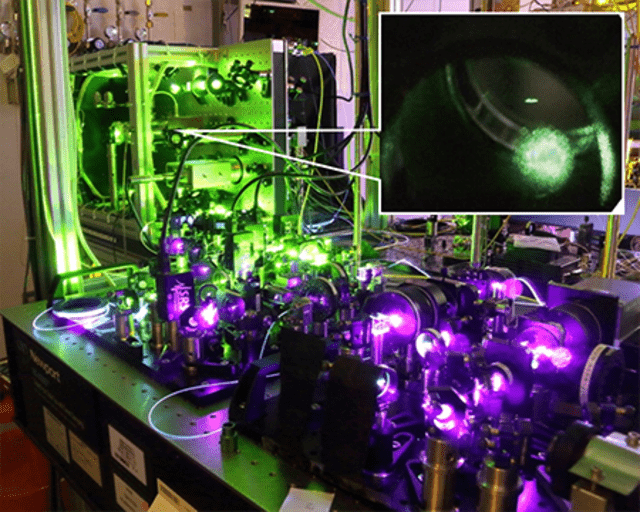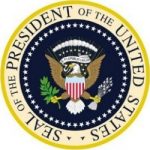Inside Quantum Technology’s Inside Scoop: Quantum and Atomic Clocks

While humans are not the only species to measure time, in a certain sense, we do make it the focus of our lives. From scheduling work, meetings, or events, to even celebrating birthdays, time has become an influential aspect of our society. We measure time by using clocks, specifically extremely accurate clocks called atomic clocks. “Atomic clocks are probably one of the oldest, most widely used quantum technologies in existence,” explained Dr. Judith Olson, the head of the Atomic Clock Division at ColdQuanta, a market-leading quantum company. The importance of these clocks to our society cannot be understated, as they are behind most of our society’s infrastructure. “Atomic clocks underpin many of the technologies we have come to depend on in our daily lives – modern communications systems, energy distribution, transport systems, and financial trading all depend on accurate time and frequency standards, ” echoed Helen Margolis, Head of Science for Time and Frequency at the UK’s National Physics Laboratory (NPL).
The reason that atomic clocks are so precise is because they leverage quantum mechanical properties of atoms and molecules. According to the National Institute of Standards and Technology (NIST), atomic clocks focus on atomic resonance frequencies to measure time. While in a regular clock (like a wristwatch) a piece of quartz vibrates at a certain frequency and that frequency is “counted” as time, a similar process is used with atoms and special lasers. As atoms change energy levels when interacting with specific laser frequencies, the atomic response to these frequencies lets the lasers be stabilized. The stabilized laser frequencies can then be “measured and counted as the “tick” of a clock. As these resonance frequencies are an inherent part of the fundamental quantum dynamics within the clock, they are extremely accurate and stable. NIST’s scientists study multiple atomic clocks, including the F1 cesium clock, which has an error rate of one second in a million years.
Applications Of Next-Generation Time Keeping
Due to their high accuracy and precision, atomic clocks have become useful for several industries. “Part of the reason why quantum is so focused on clocks is that there’s already a market,” Olson stated. “People are aware that these clocks exist and are useful technology. People buy them and use them. A lot of other quantum technology is further on the horizon without existing established economic markets, like quantum computers.” Atomic clocks have already been shown to be a disruptive technology for timekeeping, which many in the quantum industry hope also translates to quantum computers. As Olson stated; “You can’t go out and buy a quantum computer from a store right now, but have been able to buy quantum clocks, commercially now, for decades.” This makes these devices more accessible for researchers and companies to utilize in developing other technology.
Because these devices are readily available many industries are already leveraging their benefits for significant advantages. From GPS satellites to local networks, these clocks are improving navigation systems, which can benefit a whole range of individuals, including the military. “For example, satnavs rely on atomic clocks on board satellites to be able to calculate and track the position of the receiver,” Margolis explained. Atomic clocks are also especially useful in telling us more about the shape of the Earth and its gravitational fields. According to a 2020 SPIE article: “Because the presence of gravity affects the rate of time passing, clocks closer to sea level actually tick slower than one on Mount Everest, which means that physicists can use these clocks to monitor the shape of our planet, a scientific field known as geodesy.” This technology could even possibly help scientists track the changes in sea level with more accuracy or provide early detection and warning systems for natural disasters
Other industries like finance have also found benefits with these devices. “They’re used in almost every financial transaction,” Olson stated. “Most people don’t think about it, but atomic clocks ultimately provide timestamps for stock trades and ATM transactions. So, every time you are transacting money or data, it usually gets a time tag derived from GPS or other traceable timescales. This is important for security and regulation of financial markets.” Even space exploration is finding a use for atomic clocks. In 2019, NASA sent an atomic clock into orbit. “These clocks would help the spacecraft orient themselves and navigate autonomously,” a recent NASA article explained. However, to get more use out of atomic clocks, smaller ruggedized versions need to be designed and developed.
Atomic Clocks and Quantum Computers
Many within the quantum industry are hoping to combine one type of technology, the atomic clock, with another, the quantum computer. Already recent research has shown that an atomic clock can be attached to a quantum computer to make an ultra-precise sensor, which could measure gravity and other forces. “Atomic clocks are the best frequency references in existence,” Olson explained. “And frequency is the best measurable quality humanity has access to. So, it’s useful any time you care about what exact frequency your laser is, which quantum computers using atom-laser interactions care about a lot. The stability of the laser frequencies can be a limitation for some modalities in quantum computing. Because you may have phase noise, frequency noise, or other ways noise can creep in to destroy the fidelity of the gate functions. Oftentimes, that can be improved by having a reliable frequency reference to lock their lasers or improve their noise performance, similar to an atomic clock.”
With these accurate sensors made up of atomic clocks and quantum computers, there are many uses for these quantum sensors and imaging devices. “Some near-term people-friendly applications are in geology or archaeology, like new imaging techniques where you could scan through forests, jungles, or the ground to find ancient ruins,” Olson said. “These techniques carry over for military use, where the battlefield can be monitored and observed like never before.” While research still needs to be done, others have suggested that these devices could be used to potentially find new oil or mineral deposits.
Though quantum computing still has a long way to go, Olson believes that atomic clocks will be more important to the overall network than individual computers. “It’s the quantum network that we will need clocks to transmit information, synchronize data, and ensure secure quantum communications” she stated. “It’s going to be important that we understand the time and frequency content of the information being transmitted… But the actual operation of a quantum computer, I think, will rely much more on frequency references than it would an atomic clock.”
Kenna Hughes-Castleberry is a staff writer at Inside Quantum Technology and the Science Communicator at JILA (a partnership between the University of Colorado Boulder and NIST). Her writing beats include deep tech, the metaverse, and quantum technology.



















